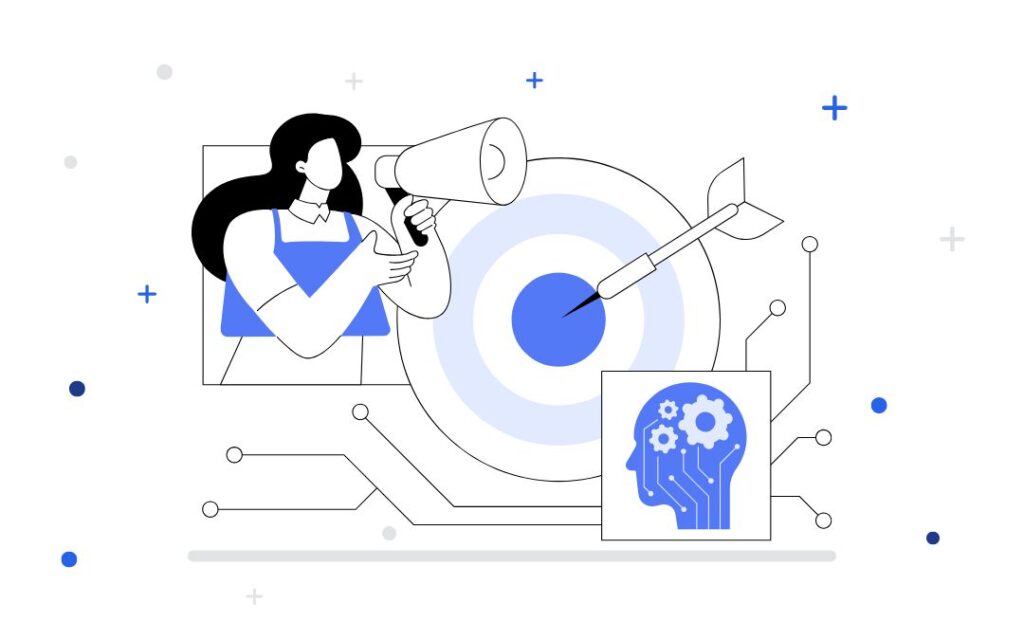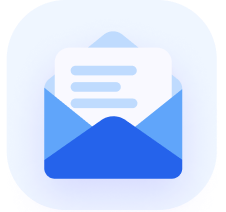When promoting your webinar on social media, the first impression is everything. That’s where a powerful hook comes in.
A great hook stops the scroll, piques curiosity, and makes your audience think, “I need to know more.” It’s the first impression your webinar makes—and often, the deciding factor between a click and a pass.
Whether you’re aiming to boost sign-ups, increase engagement, or simply stand out in a crowded feed, using strategic hooks can make all the difference.
Here are ten proven hooks, each with examples and best practices, that you can use to promote your webinar on social media.
Crafted the perfect hook? Let’s make sure it leads to conversions.
With AEvent, you can align powerful messaging with full-funnel automation, ensuring every social media post drives measurable ROI.
See AEvent in action—book your demo today.
10 Webinar Hooks That Capture Attention and Convert
The right hook doesn’t just grab attention—it speaks directly to your audience’s needs, triggers emotion, and compels them to click, register, and show up.
These 10 hooks are a key part of your promotional toolkit. For a full-funnel marketing strategy, check out our Webinar Marketing Guide, packed with templates and step-by-step insights.
1. The Shocking Statistic Hook
Why it works:
Numbers don’t lie—and when they surprise or alarm your audience, they immediately grab attention. A powerful statistic can highlight a problem, expose a gap, or validate the need for your webinar’s topic—all in a single line.
Example Copy:
“90% of businesses are making this costly error. Don’t be one of them. Join our webinar to learn how to avoid it.”
“75% of SaaS users abandon a product within the first 90 days. Our masterclass reveals how to build sticky user experiences.”
“Properties sit empty for an average of 3 months, costing landlords thousands. Our guide reveals strategies to find reliable tenants faster.”
Pro Tip for Marketers:
Choose statistics that are credible, relevant, and emotionally charged. Bonus points if they tie directly to a common mistake or missed opportunity your audience is already thinking about.
2. The Shocking Truth Hook
Why it works:
People are drawn to unexpected insights, especially when those insights challenge what they think they know. This hook disrupts assumptions and creates instant intrigue by revealing a hidden truth your audience hasn’t considered. It’s about sparking that “Wait, what?” moment that drives clicks and registrations.
Example Hooks:
“The real reason your abandoned cart emails aren’t working? It’s not timing—it’s trust.”
“Thinking more features equals happier users? What if the key to retention is actually radical simplicity?”
“You’re focused on acquiring new customers, but what if your biggest growth opportunity is hidden within your existing user base?”
Pro Tip for Marketers:
Pick a common belief or surface-level strategy your audience relies on, then reveal why it’s not working. The more closely your truth aligns with a known frustration, the more powerful your hook becomes.
3. The Compelling Fact Hook
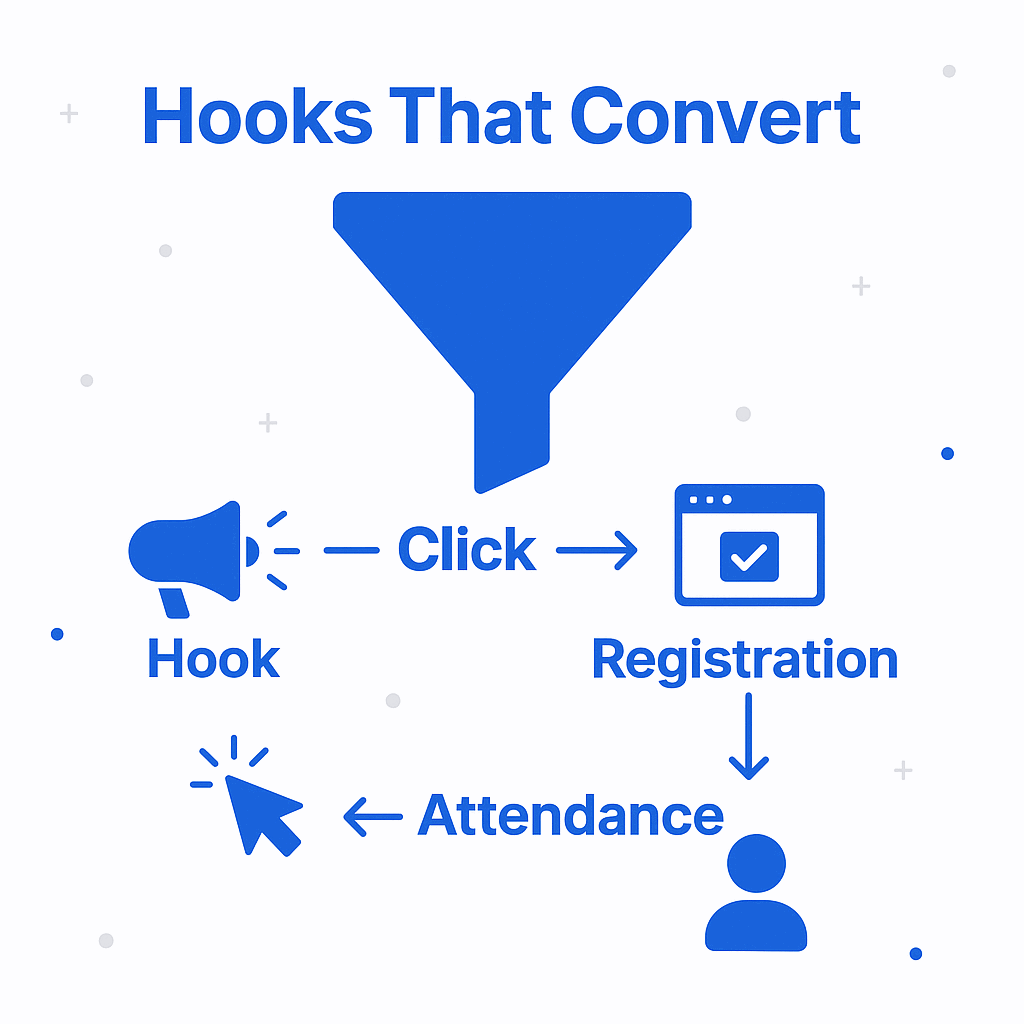
Why it works:
The Compelling Fact Hook delivers a specific benefit or result in a short, punchy format. It often includes numbers, outcomes, or timelines—giving your audience a clear reason to pay attention right now. This hook works especially well when you’re highlighting surprising results or fast wins that speak directly to your audience’s goals.
Example Hooks:
“3 workflows that saved me 10+ hours a week—without hiring help.”
“One email generated 72 qualified leads in 48 hours. We’re breaking it down live.”
“How I improved client retention by 40%—just by changing one onboarding step.”
Pro Tip for Marketers:
The Compelling Fact Hook leads with value for the audience. Use specific numbers, unexpected timeframes, or unconventional methods to capture attention. The more measurable or surprising your outcome, the more irresistible the hook becomes.
4. The FOMO (Fear of Missing Out) Hook
Why it works:
FOMO taps into a powerful psychological trigger—no one wants to be left behind. When you highlight urgency, exclusivity, or limited availability, your audience feels a natural push to act now rather than later. The FOMO Hook is perfect for webinars with a time-sensitive offer, limited spots, or special guests.
Example Hooks:
“We’re sharing the exact launch strategy that brought in $100K—but only for the first 100 attendees.”
“Only 20 spots available for our live Q&A on how to invest in your first rental property. Don’t miss your chance.”
“This invite-only training is almost full—secure your seat before the doors close.”
Pro Tip for Marketers:
Use real limitations (like number of seats or registration deadlines) to add credibility. Combine urgency with exclusivity to drive higher conversions, especially in your final promotional push.
5. The Big Promise Hook
Why it works:
The Big Promise Hook goes bold. It makes an exciting claim about the result your audience can achieve—something they deeply want, but might not believe is possible. When done right, this hook generates instant interest and gets people thinking, “Could this really work for me?”
The key is to make your promise ambitious but believable, and then use your webinar to back it up.
Example Hooks:
“How to validate your business idea in 7 days—with zero ad spend.”
“Lose 5 pounds in 2 weeks—without changing what you eat.”
“Double your close rate in 30 days using this simple mindset shift.”
Pro Tip for Marketers:
Focus on a clear, specific outcome that’s emotionally resonant. If it feels too good to be true, make sure your webinar content supports it with stories, data, or frameworks that prove it’s achievable. Use the Big Promise Hook when you want to sell a dream result.
6. The Credibility Hook
Why it works:
Trust is a key driver in any conversion journey, and credibility builds it fast. This hook leans on social proof, authority, or real-world results to signal that your insights are worth paying attention to. When your audience sees that you’ve done it before (or helped others do it), they’re more likely to show up and engage.
Example Hooks:
“After scaling 12 blogs to over 100K monthly readers, we’re revealing what actually works in 2024.”
“We’ve helped 500+ families become debt-free. Learn the 3-step system they all used.”
“Trusted by over 10,000 students—and now we’re teaching the strategy live.”
Pro Tip for Marketers:
The Credibility Hook leads with proof of your expertise. Highlight numbers, recognizable clients, awards, or milestones—anything that reinforces your expertise or track record. Combine it with a bold insight or teaser for what attendees will learn.
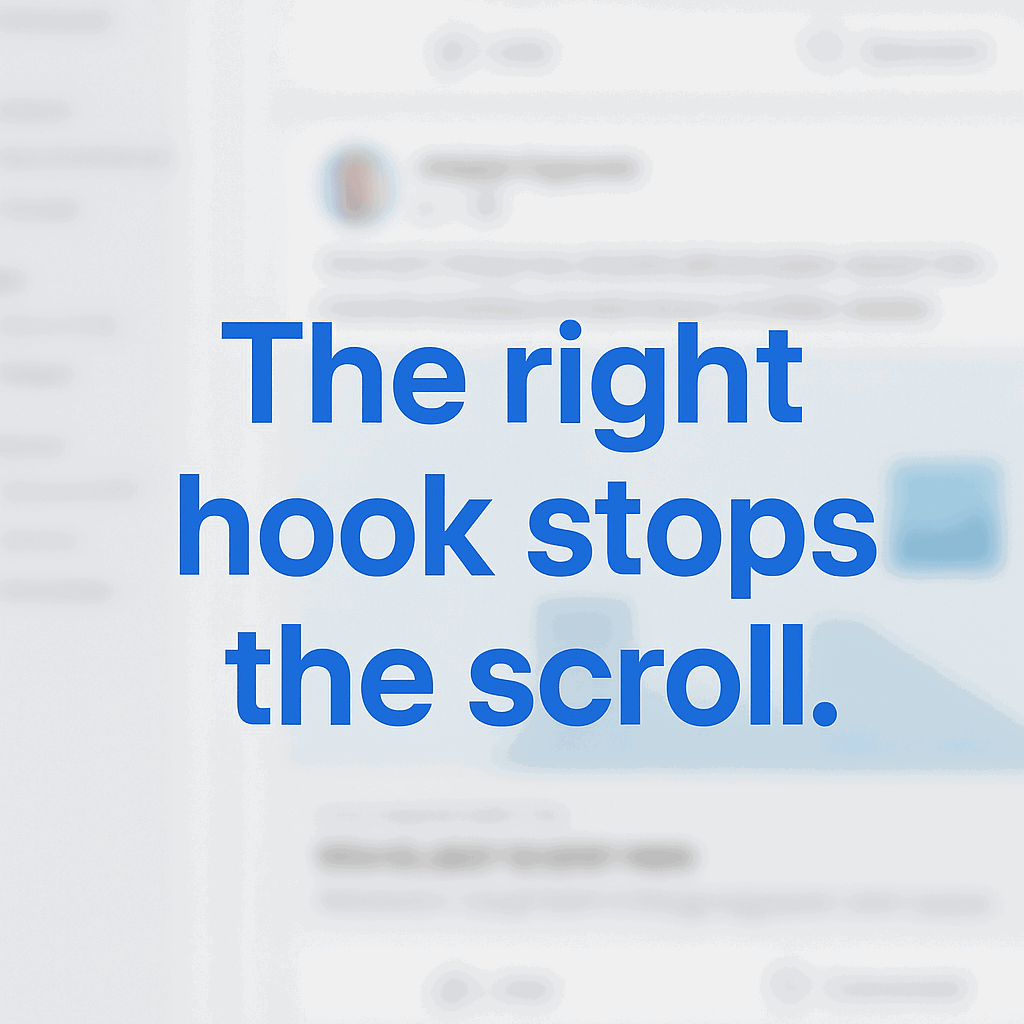
7. The How-To Hook
Why it works:
The How-To Hook taps into your audience’s desire for immediate, actionable value. It promises a clear benefit and tells them exactly what they’ll learn or walk away with. This hook works especially well when paired with practical topics, quick wins, or beginner-friendly strategies.
It’s not just a headline—it’s a mini-invite to transformation.
Example Hooks:
“How to get your first 100 email subscribers—without spending a dime.”
“How to land more interviews using a 3-sentence cover letter.”
“How to reduce churn in 7 days—with one onboarding email.”
Pro Tip for Marketers:
Start with “How to” + a desirable result, then strip out fluff. Focus on simplicity and specificity—especially if your audience is short on time or overwhelmed by options. Use the How-To Hook when you want to offer a clear roadmap.
8. The Problem-Solution Hook
Why it works:
This hook speaks directly to your audience’s pain point and positions your webinar as the solution. It’s relatable, results-focused, and effective because it meets your audience where they are emotionally and practically. When someone sees their problem called out, they naturally want to know how to fix it.
Example Hooks:
“Demo calls falling flat? Learn how to turn product tours into conversion machines.”
“Struggling to get sales from your launch? We’ll show you how to build a funnel that converts.”
“Getting attendees is easy—keeping them engaged is the hard part. Discover the 3 tools top hosts use to boost retention.”
Pro Tip for Marketers:
Use words your audience would actually say when describing their problem. The more familiar and specific the language, the more your hook will resonate—and convert.
9. The List Hook
Why it works:
Lists are easy to digest, visually scannable, and naturally promise value. This hook tells your audience exactly what they’ll get—and how much of it.
Whether it’s quick tips, powerful strategies, or costly mistakes to avoid, the List Hook offers a structured preview of your content that feels both manageable and rewarding.
Example Hooks:
“7 daily habits of high-performing professionals—how many are you missing?”
“5 content upgrades that can double your lead generation—without writing a single new blog post.”
“Top 10 abandoned cart subject lines that actually win back customers.”
Pro Tip for Marketers:
Use odd numbers and specific outcomes. Odd numbers tend to outperform even ones, and clear value makes the list feel more compelling than generic tips.
10. The Bold Claim Hook
Why it works:
The Bold Claim Hook dares your audience to challenge their assumptions—and rewards them with something unexpected. It grabs attention by making a provocative statement, then teasing just enough value to earn the click. When your claim sounds almost too good to be true (but isn’t), curiosity kicks in fast.
Example Hooks:
“This $5 strategy outperformed a $2,000 ad campaign—find out how.”
“The less I worked, the more I earned—here’s the system that flipped everything.”
“We doubled conversions by removing our homepage CTA. Here’s why it worked.”
Pro Tip for Marketers:
Bold doesn’t mean hype. Make your claim credible, surprising, and story-driven—then back it up with a clear breakdown during your webinar. The contrast between the statement and what your audience expects is what makes it click-worthy.
You’ve hooked your audience—now make sure the webinar delivers. Check out our guide to improving webinar quality to boost engagement, retention, and overall experience.
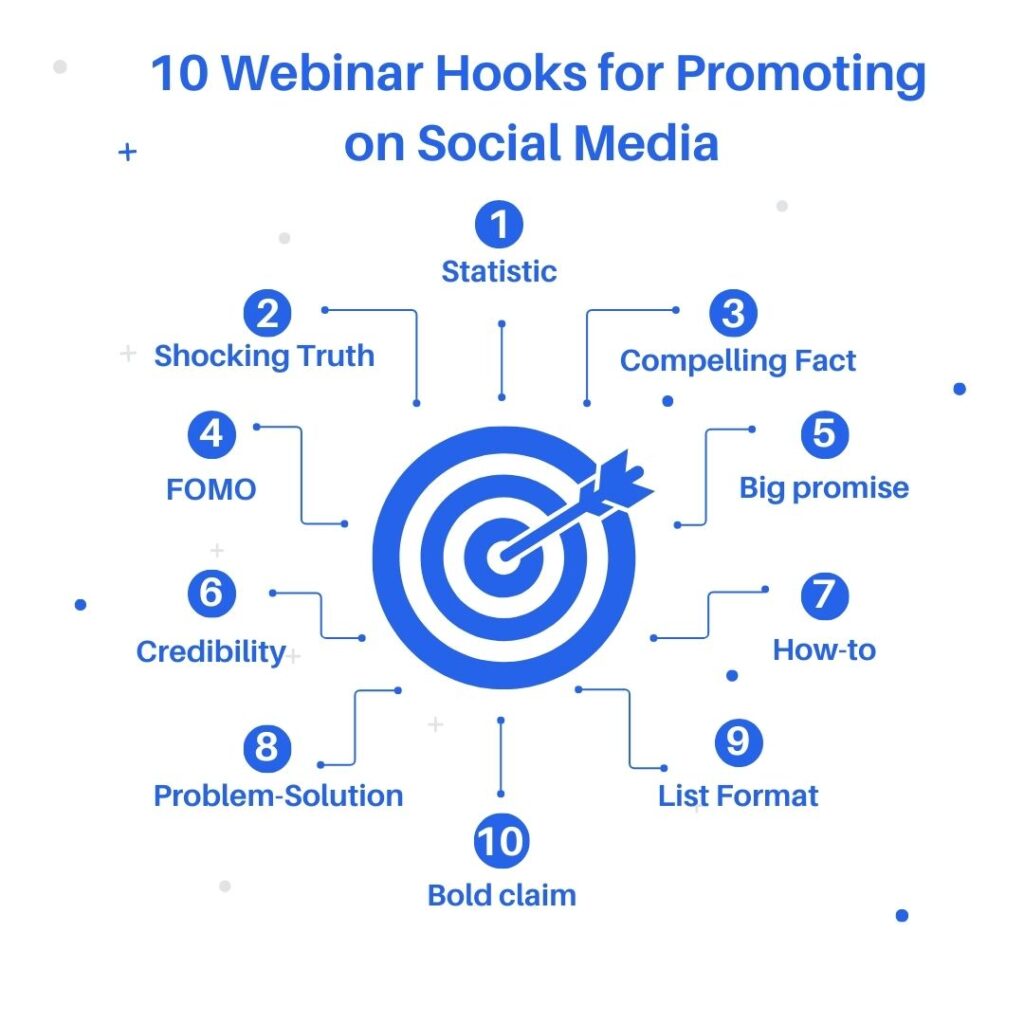
Best Practices for Using Hooks on Social Media
Writing a great hook is only half the battle—how you use it on social media can make or break your campaign. These best practices ensure your message doesn’t just grab attention but also drives clicks, registrations, and conversions.
Know Your Audience
The most effective hooks speak directly to your audience’s pain points, desires, and awareness level. Are they just discovering the problem? Already looking for a solution? Use that insight to shape your language and tone.
Also, consider the platform:
- LinkedIn users may respond better to credibility and insight-driven hooks.
- Instagram or TikTok may favor bold claims and emotional impact. Tailoring your hook to fit both mindset and medium increases relevance and results.
Keep It Short and Snappy
Attention spans are short. Aim for under 15 words—and cut the fluff. Each word should earn its place by delivering emotion, intrigue, or value.
- Better: “How I tripled webinar attendance in 7 days—without ads.”
- Weaker: “We’ll be discussing several strategies for increasing your webinar’s performance.”
Shorter hooks are easier to read, easier to remember, and more likely to convert.
Use Power Words
Certain words naturally grab attention and spark curiosity. Sprinkle in power words that are known to increase engagement, such as:
- Secret
- Instant
- Exclusive
- Now
- Proven
- Free
- Uncover
These words trigger an emotional response and help your message cut through the noise.
Create Urgency
FOMO isn’t just a hook—it’s a strategy. Add urgency to your social copy with:
- Countdown timers
- Limited-time bonuses
- “Only X spots left” language
- Specific dates (e.g., “Register by Friday at noon”)
When people feel like they might miss out, they act faster.
Pair with Strong Visuals
Hooks are most effective when they stop the scroll visually, too. Use:
- Eye-catching graphics or animations
- On-brand color schemes and typography
- Short-form videos or motion text
- Visual contrast between background and text
A good visual doesn’t just support your hook—it amplifies it.
Test and Learn
Even the strongest hooks won’t work on every audience. That’s why testing is key. Run A/B tests across different platforms using variations of:
- Hook types
- Headlines vs. captions
- Visual formats
- Emojis or no emojis
Track performance metrics like click-through rates, sign-up conversions, and engagement. Then double down on what works.
Once someone clicks your hook, your email sequence needs to take over. Learn how to craft high-converting follow-ups in our guide on writing webinar email sequences.
Ready to Make Your Webinar Hook Irresistible?
Crafting a compelling hook is your first step to standing out, but it’s what happens after the click that defines your success. If you’re serious about scaling webinar attendance, boosting engagement, and driving real ROI, the right messaging needs the right platform to match.
That’s where AEvent comes in.
From automated registration workflows and smart follow-ups to real-time analytics and AI-powered content repurposing, AEvent helps you turn scroll-stopping hooks into full-funnel conversions. No more one-and-done webinars—just repeatable, scalable success.
Schedule a demo today and see how AEvent helps marketers like you transform webinars into high-performing marketing assets.


